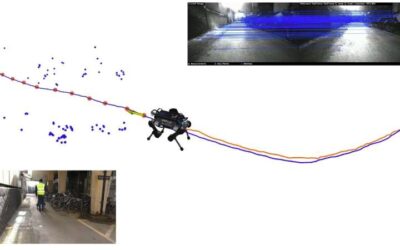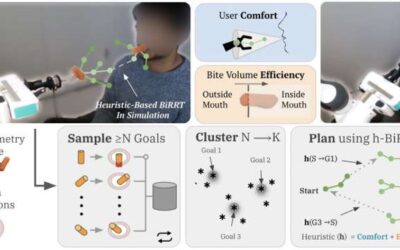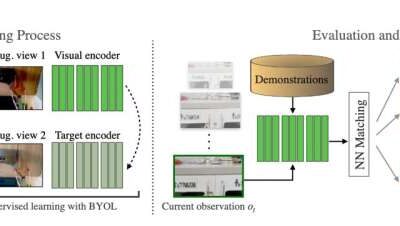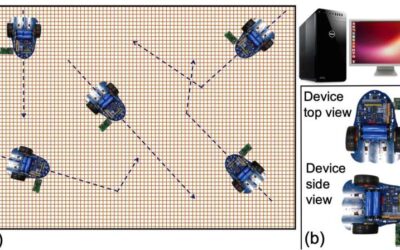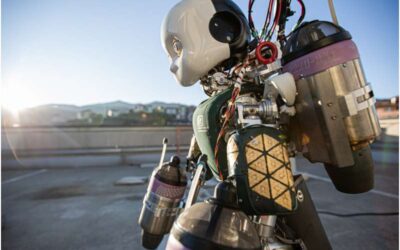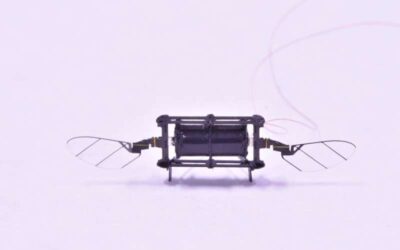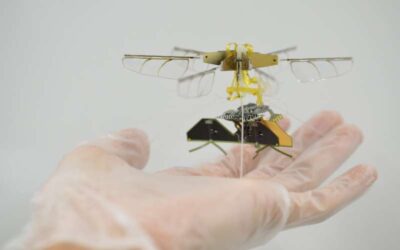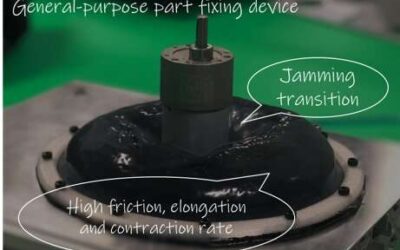In recent years, scientists have introduced a wide variety of robots of all shapes and sizes. Among these are microswimmers, carefully engineered microstructures that can move in water and other liquids.
Robotics
Study examines the effects of personally relevant robotic failures on users’ perceptions of collaborative robots
Over the past few decades, roboticists and computer scientists have developed increasingly advanced systems that can interact with humans and complete numerous everyday tasks. While robots are rapidly advancing, for humans to effectively start using them they should...
A locally reactive controller to enhance visual teach and repeat systems
To operate autonomously in a various unfamiliar settings and successfully complete missions, mobile robots should be able to adapt to changes in their surroundings. Visual teach and repeat (VT&R) systems are a promising class of approaches for training robots to...
A framework to optimize the efficiency and comfort of robot-assisted feeding systems
Robots could be invaluable allies for older adults and people with physical disabilities, as they could assist them in their day-to-day life and reduce their reliance on human carers. A type of robotic systems that could be particularly helpful are assisted feeding or...
A new framework that could simplify imitation learning in robotics
Over the past few decades, computer scientists have been trying to train robots to tackle a variety of tasks, including house chores and manufacturing processes. One of the most renowned strategies used to train robots on manual tasks is imitation learning.
A concurrent transmission strategy to enhance multi-robot cooperation
Researchers at the Indian Institute of Technology Bhubaneswar, in collaboration with TCS Research and Wageningen University, recently devised a new strategy that could improve coordination among different robots tackling complex missions as a team. This strategy,...
Moving toward the first flying humanoid robot
Researchers at the Italian Institute of Technology (IIT) have recently been exploring a fascinating idea, that of creating humanoid robots that can fly. To efficiently control the movements of flying robots, objects or vehicles, however, researchers require...
A new micro aerial robot based on dielectric elastomer actuators
Micro-sized robots could have countless valuable applications, for instance, assisting humans during search-and-rescue missions, conducting precise surgical procedures, and agricultural interventions. Researchers at Massachusetts Institute of Technology (MIT) have...
A new untethered and insect-sized aerial vehicle
Researchers at Toyota Central R&D Labs have recently created an insect-scale aerial robot with flapping wings, powered using wireless radiofrequency technology. This robot, presented in a paper published in Nature Electronics, is based on a radiofrequency...
A soft jig that could enhance the performance of general-purpose assembly robots
As robots become increasingly advanced, they are being trained to complete a wide variety of tasks. Some roboticists have been specifically exploring the potential of robotic systems that can assembly items without much human supervision, as this could significantly...



